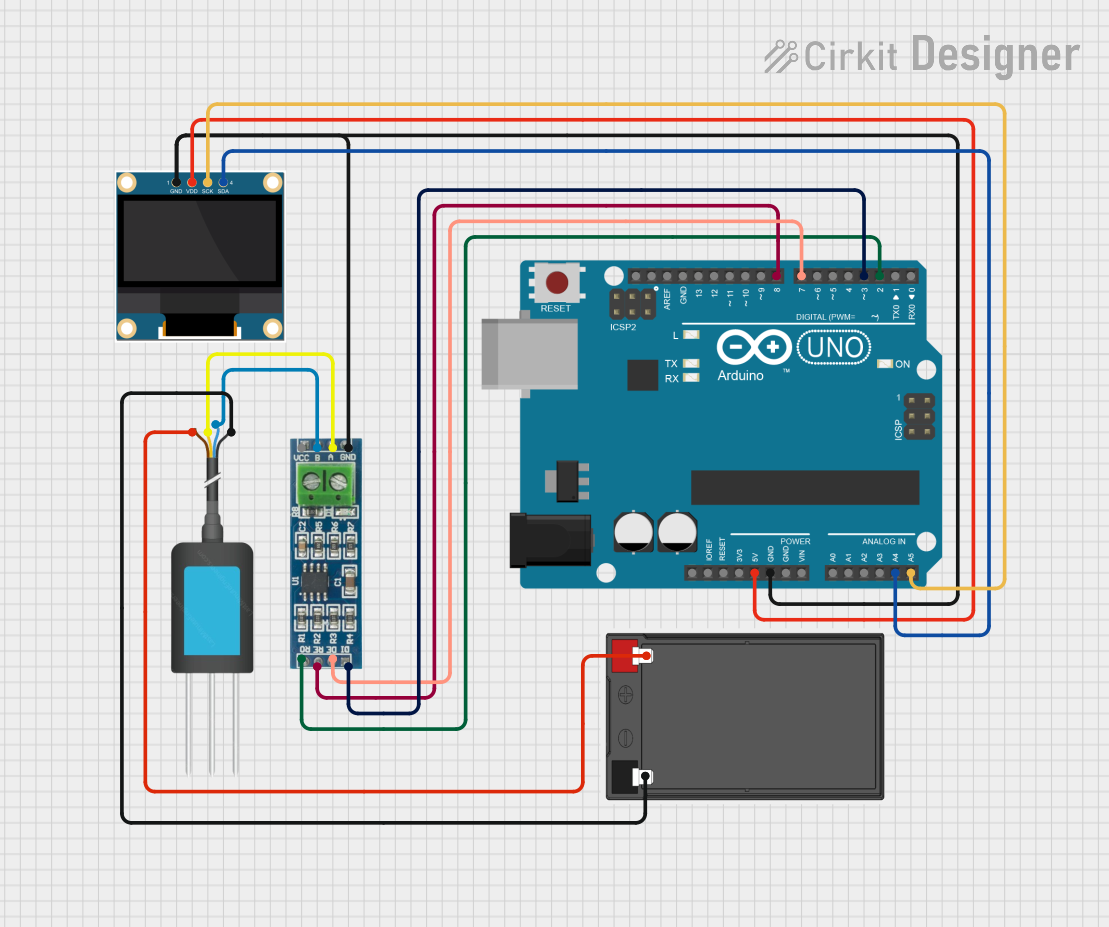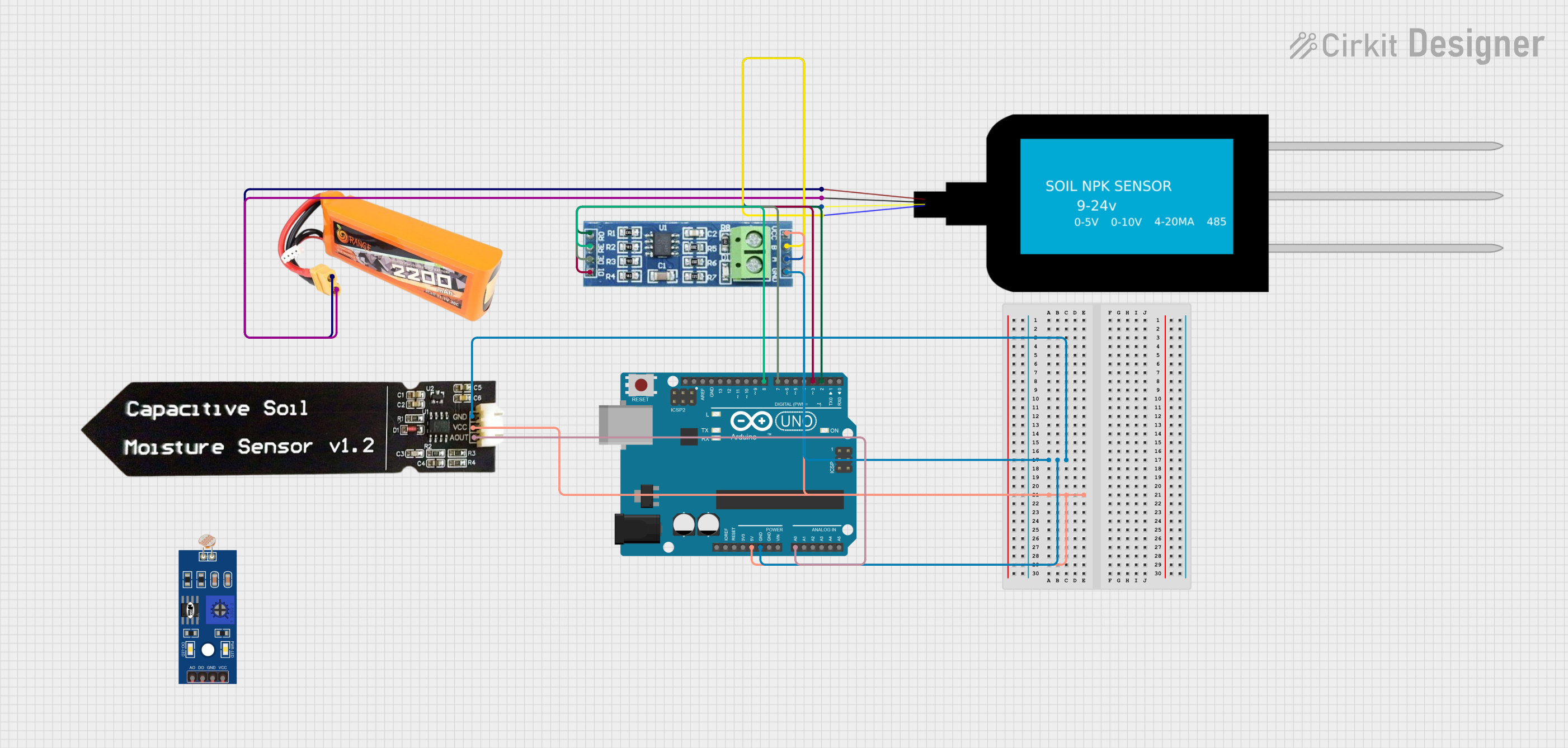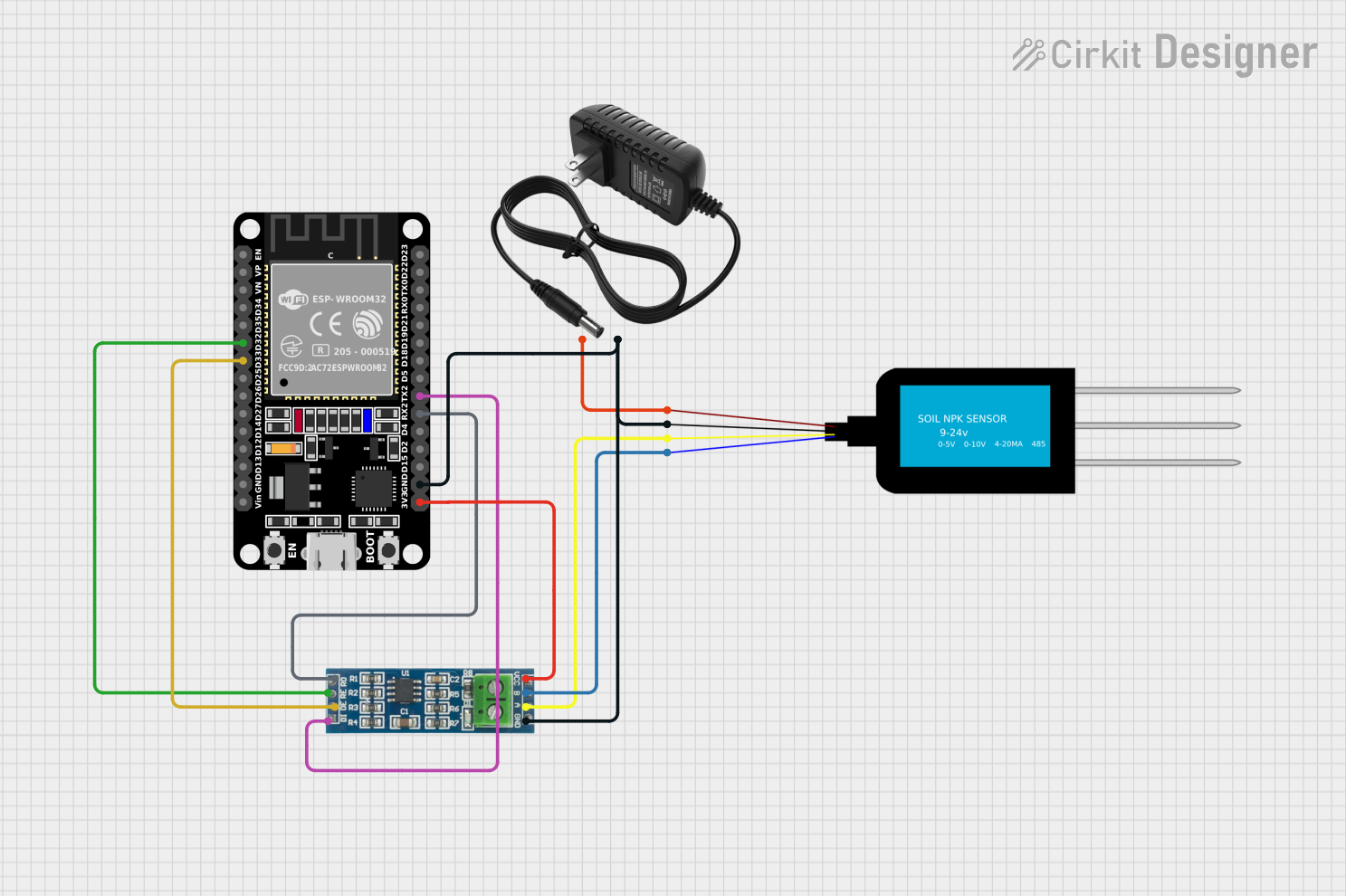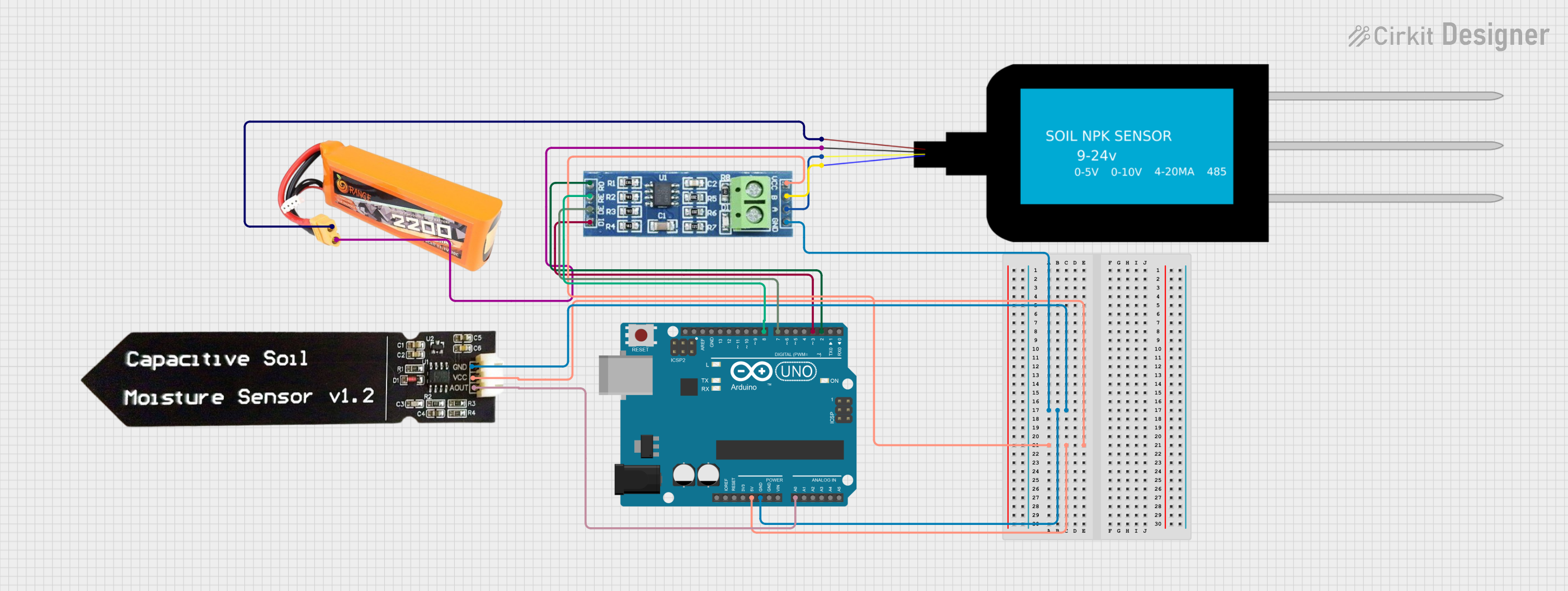
How to Use NPK Soil Sensor: Examples, Pinouts, and Specs

 Design with NPK Soil Sensor in Cirkit Designer
Design with NPK Soil Sensor in Cirkit DesignerIntroduction
The NPK Soil Sensor is an innovative electronic device designed to measure the levels of nitrogen (N), phosphorus (P), and potassium (K) in soil, which are vital nutrients for plant growth. By providing accurate readings of these nutrients, the sensor assists farmers, gardeners, and researchers in assessing soil fertility and making informed decisions about fertilizer application. This sensor is particularly useful in precision agriculture, horticulture, and environmental monitoring.
Explore Projects Built with NPK Soil Sensor

 Open Project in Cirkit Designer
Open Project in Cirkit Designer
 Open Project in Cirkit Designer
Open Project in Cirkit Designer
 Open Project in Cirkit Designer
Open Project in Cirkit Designer
 Open Project in Cirkit Designer
Open Project in Cirkit DesignerExplore Projects Built with NPK Soil Sensor

 Open Project in Cirkit Designer
Open Project in Cirkit Designer
 Open Project in Cirkit Designer
Open Project in Cirkit Designer
 Open Project in Cirkit Designer
Open Project in Cirkit Designer
 Open Project in Cirkit Designer
Open Project in Cirkit DesignerTechnical Specifications
Key Technical Details
- Operating Voltage: 3.3V to 5V
- Output Voltage: 0 - 3.0V
- Current Consumption: 35mA (typical)
- Measurement Range: 0 to 1999 mg/kg (ppm) for N, P, and K
- Accuracy: ±10%
- Operating Temperature: -40°C to +85°C
- Interface: Analog
Pin Configuration and Descriptions
| Pin Number | Name | Description |
|---|---|---|
| 1 | VCC | Power supply (3.3V to 5V) |
| 2 | GND | Ground connection |
| 3 | AO | Analog output for N concentration |
| 4 | AO | Analog output for P concentration |
| 5 | AO | Analog output for K concentration |
Usage Instructions
Integration with a Circuit
To use the NPK Soil Sensor in a circuit:
- Connect the VCC pin to a 3.3V or 5V power supply.
- Connect the GND pin to the ground of the power supply.
- Connect the AO pins to the analog input pins of a microcontroller, such as an Arduino UNO.
Best Practices
- Calibrate the sensor before use to ensure accurate readings.
- Avoid exposing the sensor to liquids or corrosive chemicals.
- Insert the sensor probes fully into the soil for consistent measurements.
- Allow the sensor to stabilize in the soil for a few minutes before taking a reading.
Example Code for Arduino UNO
// Define the analog input pins for N, P, and K
const int N_Sensor_Pin = A0;
const int P_Sensor_Pin = A1;
const int K_Sensor_Pin = A2;
void setup() {
// Initialize serial communication at 9600 baud rate
Serial.begin(9600);
}
void loop() {
// Read the analog values from the sensor
int N_value = analogRead(N_Sensor_Pin);
int P_value = analogRead(P_Sensor_Pin);
int K_value = analogRead(K_Sensor_Pin);
// Convert the analog values to nutrient concentration (example conversion)
float N_concentration = N_value * (1999.0 / 1023.0);
float P_concentration = P_value * (1999.0 / 1023.0);
float K_concentration = K_value * (1999.0 / 1023.0);
// Print the nutrient concentrations to the serial monitor
Serial.print("Nitrogen (N): ");
Serial.print(N_concentration);
Serial.println(" ppm");
Serial.print("Phosphorus (P): ");
Serial.print(P_concentration);
Serial.println(" ppm");
Serial.print("Potassium (K): ");
Serial.print(K_concentration);
Serial.println(" ppm");
// Wait for a second before taking the next reading
delay(1000);
}
Troubleshooting and FAQs
Common Issues
- Inaccurate Readings: Ensure the sensor is calibrated correctly and the probes are fully inserted into the soil.
- No Output Signal: Check the power supply connections and ensure the sensor is not damaged.
- Fluctuating Readings: Stabilize the sensor in the soil for a few minutes before taking a reading.
FAQs
Q: Can the sensor be left in the soil permanently? A: It is not recommended to leave the sensor in the soil permanently as prolonged exposure to moisture and soil chemicals can degrade the sensor's performance.
Q: How often should the sensor be calibrated? A: The sensor should be calibrated before the first use and periodically thereafter, especially if used in different types of soil.
Q: Is the sensor waterproof? A: The sensor probes are typically water-resistant, but the electronic components are not waterproof. Care should be taken to avoid getting the sensor's head wet.
For further assistance, please contact the manufacturer's technical support with the part ID npk_soil_sensor.